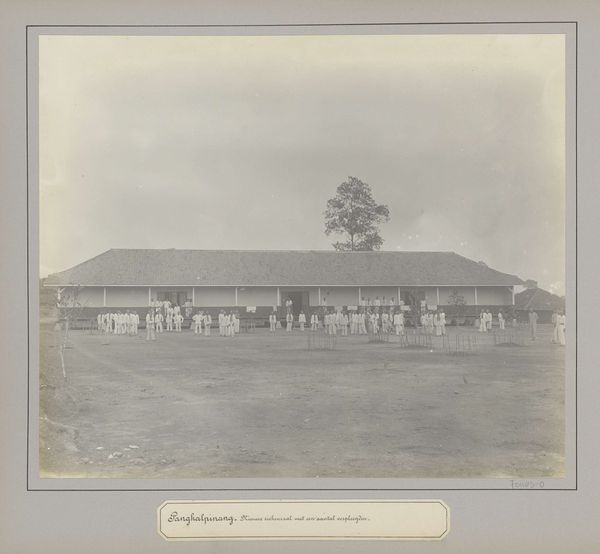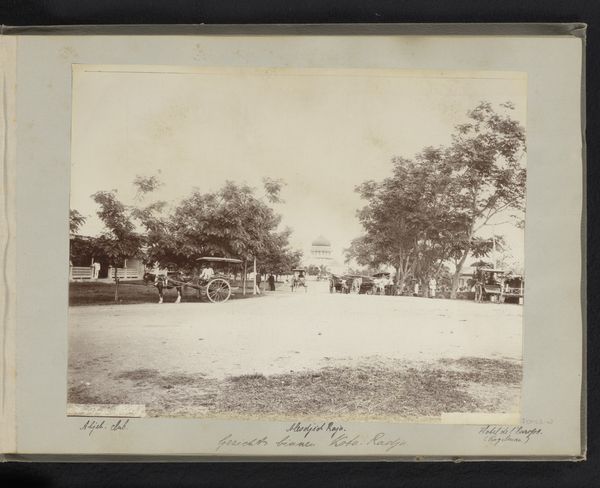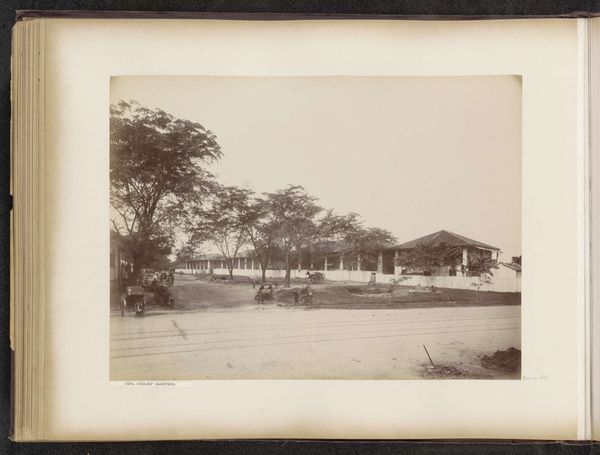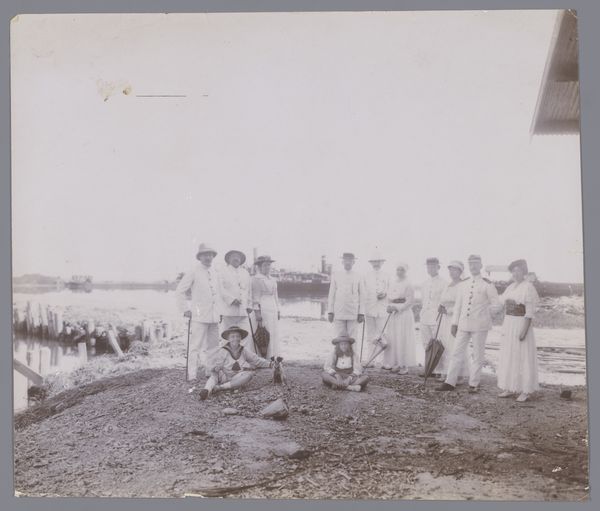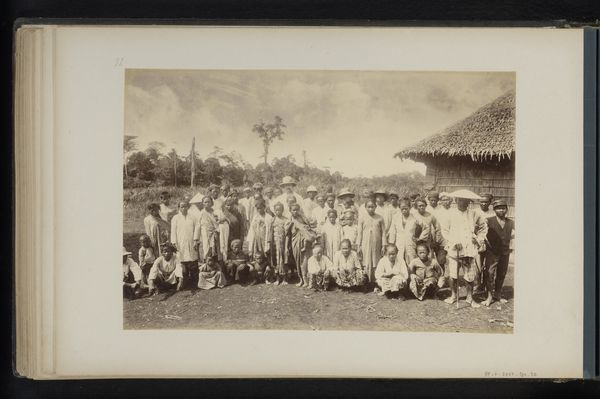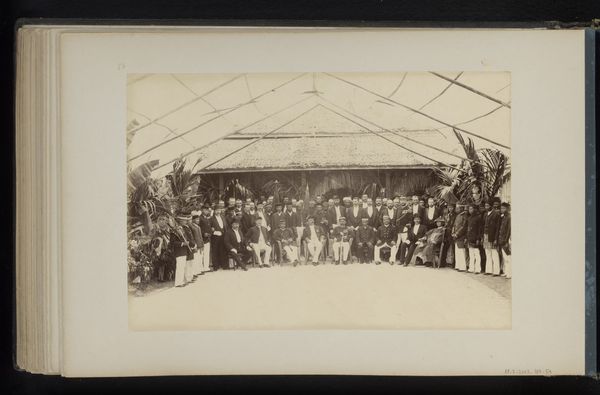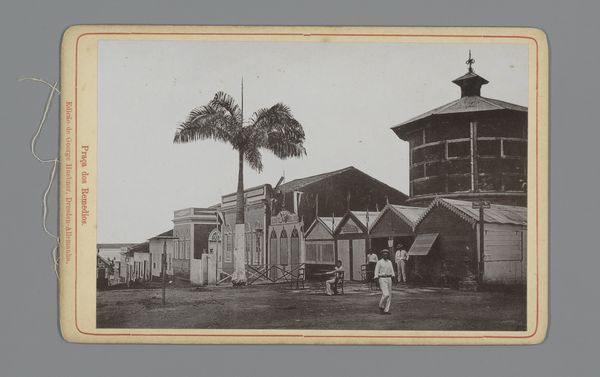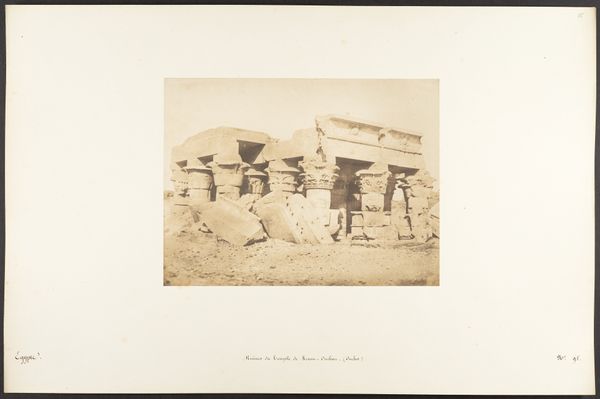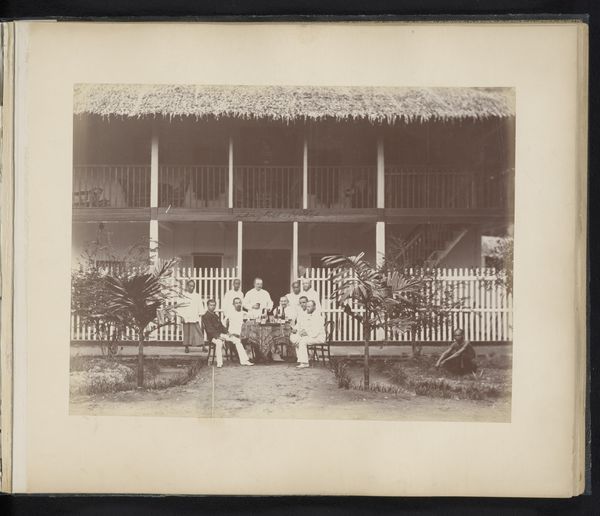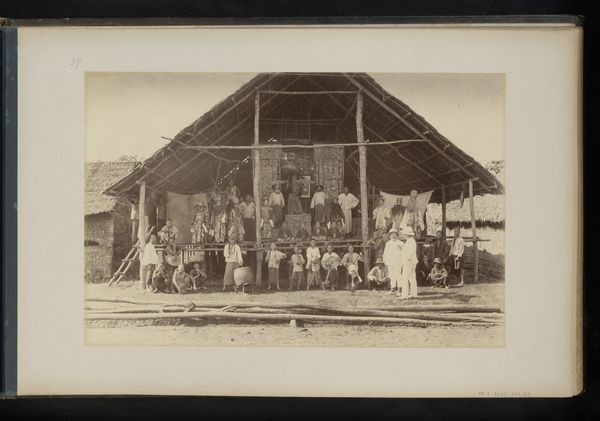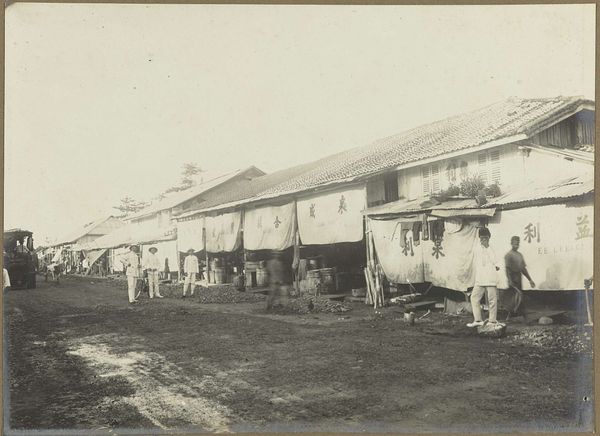
Groep contractarbeiders met opzichters op een binnenplaats op de Bindjai Estate, Sumatra c. 1890 - 1900
0:00
0:00
heinrichernstco
Rijksmuseum
photography, albumen-print
#
dutch-golden-age
#
landscape
#
photography
#
group-portraits
#
orientalism
#
albumen-print
#
realism
Dimensions: height 265 mm, width 355 mm
Copyright: Rijks Museum: Open Domain
Curator: This photograph, "Groep contractarbeiders met opzichters op een binnenplaats op de Bindjai Estate, Sumatra" comes to us from around 1890-1900 and the studio of Heinrich Ernst & Co. Editor: It strikes me as deeply unsettling, this ordered formation of laborers. There is such a stillness and silence captured here, despite the large group, the picture has this grim sense of confinement within the courtyard walls, something ominous hangs in the air. Curator: Albumen prints like this one were commonly used for documentary purposes at the time. This photograph provides a look into the system of indentured servitude practiced on plantations in Sumatra. We can see rows of workers flanked by what I presume are the estate’s overseers. Editor: “Documentary purposes,” as if its neutral record could excuse the inherent power dynamics on display here. Look closer – observe who is standing versus who is kneeling or sitting. Who is dressed in light colors versus who is not. Every detail speaks of subjugation and exploitation. Curator: The stark contrast between the dark clothing and the lighter fabrics could be symbolic; maybe the different visual weight alludes to the laborers' reduced circumstances versus the seeming ease and authority of the colonial structure, an early form of propaganda or carefully constructed narrative, to imply order and civilized industry in these estates. Editor: Perhaps, or simply another way to reinforce racial and economic hierarchies through dress. Light clothing for those who avoid physical labor in this tropical heat, dark and worn clothes for those who break their backs. This image and others like it circulated in Europe and other colonies to enforce the belief of white man’s burden, justifying such treatment of non-European peoples and exploitation of foreign land. Curator: The repetitive architecture contributes too, suggesting that these people are just components to the business and not of intrinsic significance individually. This all feels disturbingly timeless. Editor: And now, even viewed from so far in the future, its meaning echoes down the corridors of contemporary power imbalances across the globe, asking to know, 'How much has really changed?' This photographic piece isn't simply a frozen picture, it’s the visual ancestor to some continuing human catastrophes, something of a potent ghost that lingers still.
Comments
No comments
Be the first to comment and join the conversation on the ultimate creative platform.
